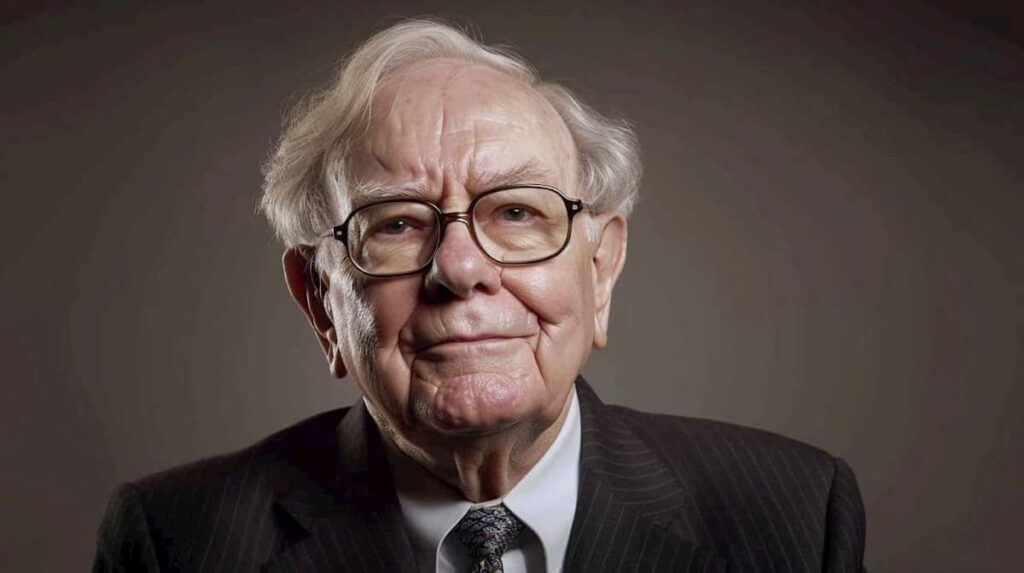Summary:
⚈ His portfolio outperformed the S&P 500, which fell 8.55%.
⚈ Coca-Cola was the only top holding to gain value during the period.
Warren Buffett’s decision to grow his cash pile at the expense of equity holdings appeared savvy, even during the Donald Trump re-election rally, due to the American dollar’s advances against other currencies. The foresight only turned more evident with the 2025 downturn.
The Oracle of Omaha’s portfolio has been noted on multiple occasions this year for significantly outperforming the broader market, thanks to Berkshire Hathaway (NYSE: BRK.A, BRK.B) stock’s advances.
In light of the claims, Finbold decided to examine just how well the legendary investor’s portfolio performed during the trade war using its top holdings.
How Buffett’s top 3 stocks performed in the trade war
At the end of 2024, the time of the last 13-f snapshot, three stocks accounted for more than half of the total Buffett portfolio: Apple (NASDAQ: AAPL), American Express (NYSE: AXP), and Bank of America (NYSE: BAC).
At the time of the filing, the legendary investor held 300 million AAPL shares worth $75 billion, 151.6 million AXP worth $45 billion, and 680 million BAC worth $30 billion.
On February 3, the first session after the trade war started in earnest with the February 1 China, Canada, and Mexico tariff announcement, Apple stock was changing hands at $228.01, meaning that the stake was, assuming Buffett refrained from either buying or selling, worth $68.4 billion.
Simultaneously, American Express was trading at $316.53, making the holding worth $48 billion, and Bank of America stood at $46.21 for a total of $31.4 billion.
At press time on April 25, APPL declined to $208.13, AXP to $267.72, and BAC to $39.64, resulting in a change in the values of the three holdings to $62.4 billion, $40.6 billion, and $27 billion.
Therefore, in total, Warren Buffett’s top three holdings dropped in value by 10.96% – $16 billion – as they moved from a total of $146 billion to $130 billion.
How Buffett’s other top 3 stocks performed in the trade war
At the time of the latest available filing, the next three biggest holdings were Coca-Cola (NYSE: KO) at 400 million shares, and the two oil giants, Chevron (NYSE: CVX) at 118.6 million and Occidental Petroleum (NYSE: OXY) at 264 million.
Collectively, the three accounted for 20.6% of the total portfolio.
On February 3, KO stock was trading at $63.35, making the stake worth $25.3 billion. By April 5, the shares’ price had increased to $72.13, meaning the holding stood at $28.8 billion.
CVX, for its part, went from $149.34 to $138.55 in the same time frame, meaning its value in the portfolio changed from $17.7 billion to $16.4 billion. OXY stock changed from $46.37 to $40.12, resulting in a decrease in its value from $12.2 billion to $10.6 billion.
Did the Warren Buffett portfolio outperform the market in the trade war?
In total, the total value of Buffett’s next three holdings rose 1.09% from $55.2 billion to $55.8 billion – a total increase of $600 million.
Examining the change in the total value of the Oracle of Omaha’s top six holdings – holdings that collectively accounted for 76.6% of the portfolio – reveals their total value changed from $201.2 billion to $185.8 billion, meaning that Buffett lost 7.65% during the trade war. At the same time, the benchmark S&P 500 index fell 8.55%.
Featured image via Shutterstock








